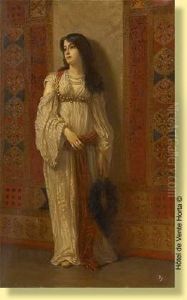Gustave Coppieters Paintings
Gustave Coppieters was a Belgian artist, known for his contributions to the fine arts in the late 19th and early 20th centuries. He was born on March 18, 1866, in Bruges, Belgium. His full name was Gustave Louis Joseph Coppieters de ter Zaele, and he was part of a family with noble roots that could be traced back to the 14th century. Despite his aristocratic background, Coppieters was deeply engaged with the artistic movements of his time and was committed to his career as an artist.
Coppieters received his formal art education at the Royal Academy of Fine Arts in Ghent, which was a major center for art and culture in Belgium. He studied under renowned professors and artists, such as Théodore-Joseph Canneel and Jean Delvin, which helped him hone his skills in painting and drawing. During his studies, he was influenced by the prevalent styles of the time, including realism and impressionism, but he developed his unique approach that often reflected the romantic and picturesque qualities of his homeland.
After completing his education, Gustave Coppieters quickly established himself as a skilled painter. His works included landscapes, portraits, and genre scenes. He often depicted the Belgian countryside, its towns, and its people, capturing the essence of rural life with sensitivity and attention to detail. His style was characterized by a soft palette, a focus on light, and a gentle, almost poetic representation of his subjects. Throughout his career, he exhibited his works in various salons and exhibitions in Belgium and abroad, gaining recognition for his artistic talents.
In addition to his painting career, Coppieters was also involved in public life. He was dedicated to the promotion of the arts in Belgium and played a role in various cultural organizations. His commitment to the arts was not only limited to his own creations but also included supporting the work of other artists and contributing to the cultural heritage of his country.
Gustave Coppieters continued to paint and be active in the art community until his later years. He passed away on October 20, 1942, leaving behind a legacy as an artist who captured the spirit of Belgium through his paintings. Today, his works can be found in private collections and museums, where they continue to be appreciated for their beauty and historical value.
